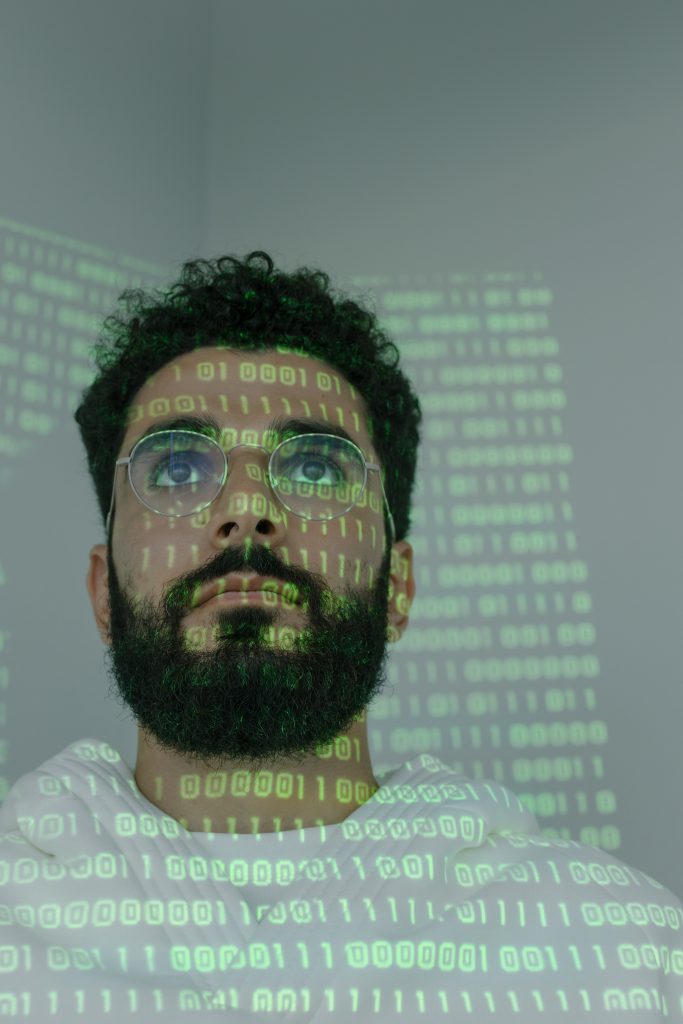In an increasingly digital world where personal information is vulnerable to cyber threats, the question of how to safeguard our privacy and security becomes paramount. With the rapid advancements in artificial intelligence (AI), it is crucial to explore ways to harness this technology to serve as our protector rather than a potential threat. This article delves into the importance of ensuring that AI is used as a tool to enhance our privacy and security, highlighting key considerations and potential solutions to this pressing issue.
1. Privacy and Security Concerns with AI
1.1 Importance of Privacy and Security
In the era of rapid technological advancements, ensuring privacy and security has become a paramount concern for individuals and organizations alike. As artificial intelligence (AI) continues to make significant strides in various domains, it is crucial to address the potential risks and challenges associated with AI systems. Privacy and security are fundamental human rights that must be protected to foster trust and confidence in the use of AI.
1.2 Growing Use of AI
AI has pervaded various aspects of our lives, revolutionizing sectors such as healthcare, finance, transportation, and communication. Its applications range from personalized virtual assistants to complex decision-making systems. With the growth of AI, the amount of personal data being collected, processed, and analyzed has also increased substantially. This raises concerns about the potential misuse or unauthorized access to sensitive information, necessitating robust privacy and security measures.
1.3 Potential Risks and Challenges
The wide-ranging deployment of AI technologies brings forth several risks and challenges to privacy and security. AI systems rely on vast amounts of data, which may include personal information, and the potential for data breaches or unauthorized access poses a significant risk. Moreover, AI algorithms may be susceptible to bias and discrimination, leading to privacy infringements and inequitable outcomes. It is crucial to address these challenges to ensure that AI is used ethically and responsibly, minimizing the potential adverse impacts on privacy and security.
2. Policies and Regulations
2.1 Government Regulations
Government regulations play a crucial role in safeguarding privacy and security in the realm of AI. It is important for governments to establish comprehensive frameworks that outline the rights and responsibilities of individuals, organizations, and AI systems. These regulations should govern data collection, usage, and storage, ensuring the protection of personal information. Governments can also enforce penalties for non-compliance, incentivizing organizations to adopt privacy-enhancing practices and security measures.
2.2 International Cooperation
Given the global nature of AI technologies, international cooperation is vital to address privacy and security concerns effectively. Collaborative efforts between governments, regulatory bodies, and industry stakeholders can facilitate the exchange of best practices and the establishment of unified standards. International agreements can encourage transparency, accountability, and the protection of privacy rights across borders, fostering a secure and trustworthy AI ecosystem.
2.3 Ethical Guidelines
Ethical guidelines provide a framework for the responsible development and deployment of AI systems. Organizations involved in AI research and development should adhere to principles that prioritize privacy, security, fairness, and accountability. Ethical guidelines can guide organizations in minimizing the risks associated with AI, ensuring that privacy and security are adequately protected. These guidelines can also assist in addressing the challenges of biased algorithms and discriminatory outcomes, promoting equitable and inclusive AI systems.

3. Transparent Data Collection and Usage
3.1 Consent and Control
Transparent data collection and usage practices are essential to protect privacy and security. Individuals should have the right to provide informed consent before their data is collected and used by AI systems. Clear and easily understandable consent mechanisms should be implemented, enabling individuals to make informed decisions about the sharing of their personal information. Additionally, individuals should have control over their data, including the ability to access, correct, and delete their information as necessary.
3.2 Explainability of AI Systems
To address concerns regarding the potential risks associated with AI algorithms, it is crucial to ensure transparency and accountability. AI systems should be designed in a way that allows for the explainability of their decision-making processes. Individuals should have access to clear explanations of how AI systems have arrived at specific outcomes or recommendations. This transparency can help identify and rectify any biases or privacy infringements, fostering trust in AI technologies.
3.3 Limitations on Data Collection
To protect privacy, organizations should impose limitations on the types and amount of data collected by AI systems. Data minimization techniques can be employed to ensure that only necessary and relevant information is collected. By limiting data collection to what is essential, organizations can reduce the potential for misuse or unauthorized access, thereby enhancing privacy and security.
3.4 Minimizing Bias and Discrimination
AI systems have the potential to perpetuate biases and discriminate against certain individuals or groups. To ensure privacy and security, organizations should develop AI algorithms that are designed to be unbiased and fair. Robust measures should be implemented to identify and mitigate biases throughout the development and deployment of AI systems. Additionally, regular audits and evaluations should be conducted to ensure that AI systems are not inadvertently compromising privacy rights or perpetuating discriminatory practices.
4. Robust Data Security Measures
4.1 Encryption and Data Protection
Effective data security measures are fundamental to safeguarding privacy in AI systems. Encryption techniques should be employed to protect data both during transit and storage. By encrypting sensitive information, organizations can ensure that unauthorized individuals cannot gain access to personal data. Robust data protection mechanisms, such as firewalls and secure networks, should also be implemented to prevent data breaches and unauthorized intrusions.
4.2 Access Control and Authentication
Maintaining control over access to AI systems and data is essential for protecting privacy and security. Organizations should implement stringent access control mechanisms and authentication protocols to ensure that only authorized individuals can access sensitive information. This includes the use of strong passwords, multi-factor authentication, and auditing mechanisms to track and monitor system access. By implementing access control and authentication measures, organizations can mitigate the risks of unauthorized access and protect privacy rights.
4.3 Regular Security Audits
Regular security audits are crucial to identify and address vulnerabilities in AI systems. Organizations should conduct comprehensive audits to assess the effectiveness of their security measures, identifying potential weaknesses or gaps that can be exploited by malicious actors. These audits should include vulnerability assessments, penetration testing, and proactive monitoring to detect and respond to potential security threats promptly. By conducting regular security audits, organizations can proactively enhance their data security posture and protect privacy.
4.4 Incident Response and Recovery
Despite the implementation of robust security measures, incidents and breaches may still occur. Organizations should have well-defined incident response and recovery plans in place to minimize the impact of security breaches and mitigate any potential privacy risks. Rapid detection, containment, and remediation of security incidents should be prioritized to ensure minimal disruption to AI systems and the protection of personal data. Organizations should also establish backup and recovery mechanisms to restore operations in the event of a security incident or data loss.

5. Collaborative AI Development
5.1 Industry and Academic Collaboration
Collaboration between industry and academia is vital to address privacy and security concerns associated with AI. By fostering partnerships, organizations can leverage the expertise of academia to develop robust privacy-enhancing technologies and security measures. Academic institutions can conduct research to identify potential privacy risks and contribute to the development of best practices. Industry, on the other hand, can provide real-world data and insights to guide academic research and enhance the practical application of AI technologies.
5.2 Open Source Contributions
Open source development can play a significant role in enhancing privacy and security in AI systems. By leveraging open source frameworks and libraries, organizations can benefit from enhanced transparency, peer review, and community collaboration. Open source platforms allow for the identification and rectification of potential vulnerabilities and biases, promoting the development of more secure and privacy-aware AI systems.
5.3 Public-Private Partnerships
Public-private partnerships can foster collaboration in addressing privacy and security concerns associated with AI. Governments, industry stakeholders, and non-profit organizations should work together to share knowledge, resources, and expertise. Through these partnerships, stakeholders can collectively develop and implement best practices, policies, and technologies that prioritize privacy and security. Public-private partnerships can also encourage information sharing and coordination in responding to emerging privacy and security threats.
6. AI-Enabled Privacy and Security Tools
6.1 Privacy-Preserving Machine Learning Techniques
Privacy-preserving machine learning techniques enable organizations to analyze data while protecting individual privacy. Techniques such as federated learning, differential privacy, and secure multiparty computation ensure that sensitive information remains private, even during collaborative AI model training. By implementing privacy-preserving machine learning techniques, organizations can leverage the power of AI while safeguarding privacy and security.
6.2 Secure Multiparty Computation
Secure multiparty computation (SMC) enables secure collaboration between parties without revealing confidential information. SMC protocols facilitate joint data analysis, predictive modeling, and decision-making while preserving privacy. By implementing SMC protocols, organizations can collaborate on AI projects without compromising the privacy of their data and the sensitive information of their partners.
6.3 Homomorphic Encryption
Homomorphic encryption allows for computation on encrypted data without decrypting it, ensuring privacy throughout the analysis process. Organizations can leverage homomorphic encryption to perform AI tasks on encrypted data, preventing unauthorized access to sensitive information. By using homomorphic encryption, privacy and security are preserved, even when AI systems are processing personal data.
6.4 Threat Detection and Prevention Systems
AI-based threat detection and prevention systems can assist in safeguarding privacy and security. These systems leverage machine learning algorithms to detect and respond to potential security threats in real-time. By continuously monitoring AI systems and network infrastructure, organizations can proactively identify and mitigate security vulnerabilities, protecting personal data and maintaining secure AI environments.

7. Continuous Monitoring and Auditability
7.1 Real-Time Threat Monitoring
Real-time threat monitoring is essential to identify and respond to security incidents promptly. By leveraging AI technologies, organizations can continuously monitor their systems, networks, and data for potential threats. AI-based threat monitoring systems can analyze patterns, anomalies, and behavior to detect suspicious activities and potential privacy infringements. Real-time threat monitoring enables proactive identification and mitigation of privacy and security risks.
7.2 Proactive Vulnerability Assessments
Proactive vulnerability assessments are crucial in identifying and addressing potential weaknesses and vulnerabilities in AI systems. Organizations should regularly assess their systems’ security posture to identify potential entry points and exploit vectors for attackers. By conducting proactive vulnerability assessments, organizations can stay ahead of emerging threats, minimize the risk of privacy breaches, and enhance the overall security of their AI infrastructure.
7.3 Transparent Performance Evaluation
Transparent performance evaluation ensures accountability and reliability of AI systems. Organizations should establish mechanisms to evaluate and monitor the performance of AI algorithms, ensuring fairness, accuracy, and compliance with privacy regulations. Through transparent performance evaluation, organizations can identify and rectify biases, discrimination, and privacy infringements, fostering trust and confidence in AI systems.
8. Education and Awareness
8.1 Privacy and Security Awareness Programs
Education and awareness programs play a crucial role in promoting privacy and security in AI. Organizations should invest in training programs to educate employees, stakeholders, and end-users about privacy rights, security risks, and best practices. By raising awareness, organizations can empower individuals to make informed decisions and take appropriate actions to protect their privacy and security in the context of AI.
8.2 AI Training and Ethical Considerations
To ensure privacy and security, organizations should provide comprehensive AI training programs that include ethical considerations. Individuals involved in the development and deployment of AI systems must be equipped with the knowledge and understanding of privacy laws, ethical guidelines, and security practices. By integrating ethical considerations into AI training, organizations can foster a culture of responsible and privacy-aware AI development.

9. Ethical AI Development Practices
9.1 Human-Centered Design
Human-centered design involves prioritizing human values, needs, and ethical considerations in the development of AI systems. Organizations should adopt human-centered design principles to ensure that AI technologies are intuitive, transparent, and respect user privacy. By considering the impact of AI on privacy and security throughout the development lifecycle, organizations can promote the responsible and ethical use of AI.
9.2 Bias Mitigation
Bias mitigation is integral to addressing privacy and security concerns in AI. Organizations should strive to develop AI algorithms that are unbiased and fair, minimizing the potential for discriminatory outcomes. Robust techniques, such as algorithmic fairness testing and bias-aware model training, should be employed to detect and mitigate biases throughout the AI development process. By actively mitigating bias, organizations can promote privacy and security for all individuals, regardless of demographic or socioeconomic factors.
9.3 Fairness and Equality
Ensuring fairness and equality in AI systems is essential to protect privacy and security. Organizations should prioritize the development and deployment of AI systems that are unbiased and treat all individuals fairly. Fairness metrics and evaluation techniques can be employed to monitor and minimize disparities in AI outcomes. By striving for fairness and equality, organizations can safeguard privacy and security rights while fostering inclusive AI systems.
9.4 Accountability and Responsibility
Organizations must establish clear lines of accountability and responsibility for the development and use of AI systems. Stakeholders involved in AI projects should be accountable for ensuring privacy and security throughout the AI lifecycle. This includes taking responsibility for addressing biases, addressing privacy risks, and complying with ethical guidelines and regulations. By emphasizing accountability and responsibility, organizations can create a culture of trust and transparency in the use of AI.
10. Regular Policy and Technology Updates
10.1 Adaptation to Evolving Threats
Privacy and security policies should be regularly updated to adapt to emerging threats and challenges. Organizations should continually assess their privacy and security measures in light of evolving technological advancements and new risks. By staying vigilant and adaptive, organizations can proactively identify and address emerging threats, ensuring that privacy and security are effectively protected in the era of AI.
10.2 Evaluation of Existing Policies
Existing policies and regulations should be periodically evaluated to assess their effectiveness in addressing privacy and security concerns with AI. Regular evaluations help identify potential gaps or shortcomings in current policies, enabling stakeholders to propose updates or amendments. By conducting evaluations, policymakers can ensure that privacy and security protections remain robust and up-to-date in the rapidly evolving landscape of AI technologies.
10.3 Adoption of Emerging Technologies
The adoption of emerging technologies can bolster privacy and security in the AI domain. Organizations should keep abreast of technological advancements and assess their potential benefits and risks. Emerging technologies, such as privacy-enhancing AI algorithms, cryptographic techniques, and secure communication protocols, can contribute to the development of more secure and privacy-respecting AI systems. By embracing emerging technologies, organizations can maintain a proactive approach to privacy and security in the age of AI.
In conclusion, safeguarding privacy and security in the realm of AI is essential to foster trust and confidence in the use of these technologies. Through comprehensive policies and regulations, transparent data collection and usage practices, robust data security measures, collaborative AI development, and the adoption of privacy-preserving tools, organizations can ensure that AI is used ethically and responsibly to protect privacy and security. Continuous monitoring, education, and evaluation initiatives further contribute to maintaining privacy rights and addressing potential risks. By adhering to ethical AI development practices and regularly updating policies and technologies, we can harness the power of AI while safeguarding individual privacy and security in today’s interconnected world.










